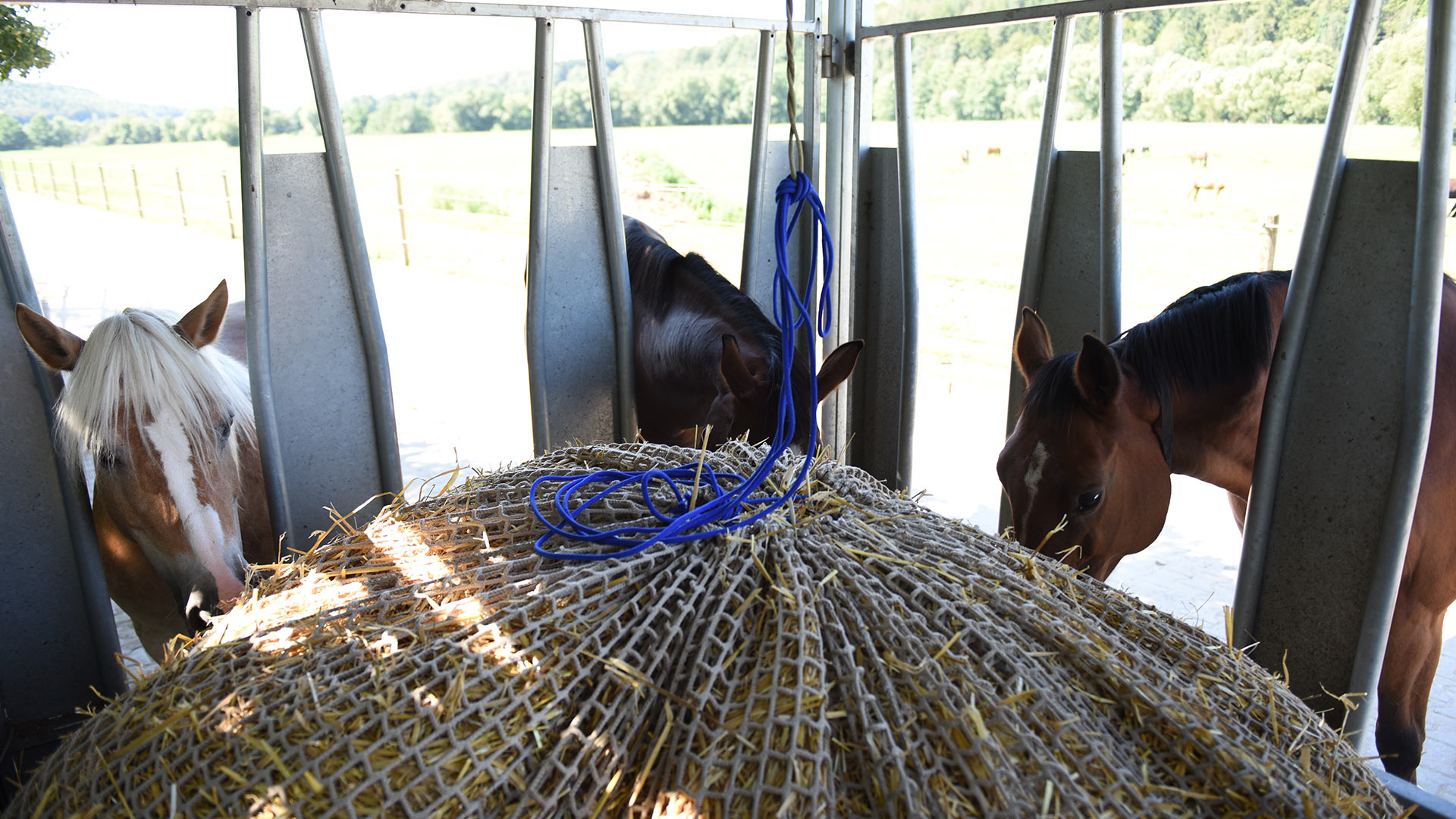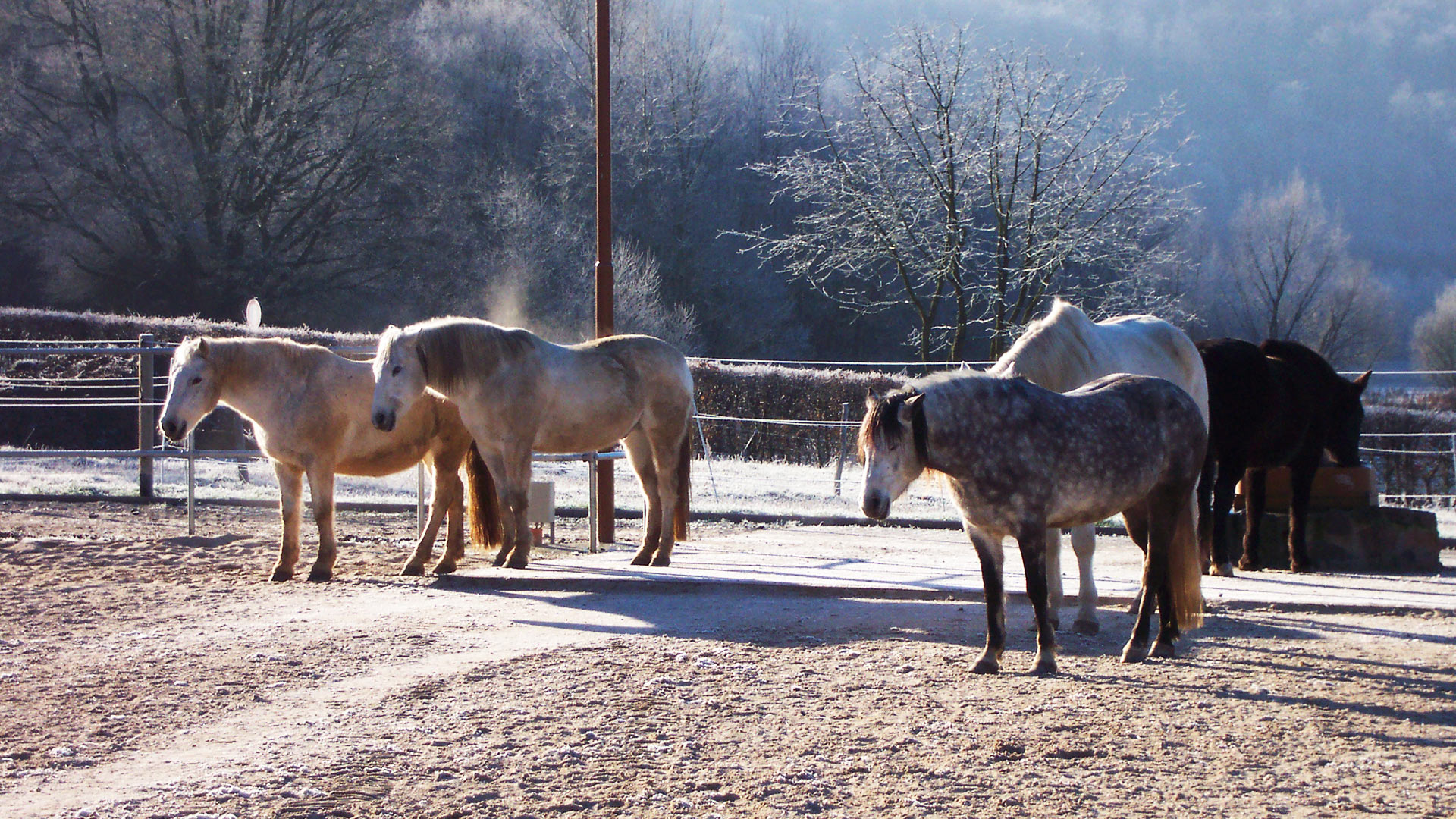Horses are gregarious animals whose basic needs are geared towards life in the steppes, where most of their daily ritual revolves around feeding and covering long distances. The constant social interaction within the herd provides them with the necessary safety in the wild, where they are always out in the open air and often exposed to extreme climatic fluctuations. Although the domestication of wild horses has, to some extent had a significant effect on their outward appearance, their natural behaviour and basic needs have remained virtually the same for thousands of years.

If the responsible horse owner wants to provide a species-appropriate life for his horse he should ideally create steppe-like horse keeping conditions. However, in today’s cultivated landscape this is obviously no longer possible. This is where the HIT Active Stable concept comes into play. In contrast with solitary horse keeping, in which horses stand isolated for hours in single bays, barely move and rarely eat more than 2-3 times a day, the HIT Active Stable emulates the horse’s natural boarding conditions significantly better. In an HIT Active Stable the horses are kept in groups, which enables them to constantly interact with their fellow species. Thoughtful planning ensures that the horses are given a structured and spacious exercise area, which they can use by day and night. The functional areas of the HIT Active Stable are spatially divided into the following categories to encourage plenty of exercise for the horses:
1 Rest and relaxation area
2 Market place / roughage feeding area
3 Feeding station for concentrates and minerals
4 Automated water supply
5 Paths / trails with various ground covering
6 Rolling and play area




Aside from the ample space which the horses have at their disposal, there are also abundant feeding stations and partitions (such as tree trunks, stone walls, green spaces, etc.) which provide further harmony and tranquility in the group, also allowing lower-ranking animals to enjoy the advantages of group horse keeping. By providing them with a diverse range of environmental stimuli, fresh air and group life, the horses soon become more well-balanced and work more efficiently. Mixed age groups teach younger horses social interaction and keep older horses fitter and healthier. In practice, both same-sex as well as mixed-sex groups are favourable, although the advantages and disadvantages of each have to be carefully weighed up depending on the individual case. Feeding of the horses takes place throughout the day via an automated HIT feeding facility for concentrated, mineral and roughage feed. A specifically designed piece of software enables the individual distribution of feed for every horse in the group. The advantages are manifold: besides the healthy and needs-based nutrition for the horses, the frequent meals encourage increased exercise. Additionally, automated feeding provides major advantages for the horse owner in terms of workload and efficiency. The range of automated HIT feeding facilities is very diverse, which means that in practice a tailor-made feeding solution can be implemented for any given requirements, be it for small or large groups.
Horse-appropriate soil conditions are created by using HIT-soil-grids or HIT-perforated mats in conjunction with sturdy foundations, to ensure that the yards and trails are usable all year round. The design of the trails has taken on ever-increasing significance and thus provides endless possibilities for creativity, seeing the increased usage of features such as equestrian staircases, water crossings and stone mazes etc. These features serve to enrich the horses’ habitat and raise their awareness. Furthermore, the right choice of ground covering has a heavy influence on the workload and efficiency of the horses. At the marketplace, also known as the roughage feeding area, the generated manure should be able to be removed or swept up by means of a Hoftrac unit (or similar). Additionally, there is a spacious roofed area which the horses can retreat to at any time. The stable floors are equipped with soft HIT horse beds kitted out with a thin layer of absorbent bedding material, thus providing the horse with an appropriate area to lie in when sleeping or resting. HIT horse beds with minimal bedding material have both the advantage of being as soft as a straw mattress, while also reducing the production of harmful gas and dust, thus constituting a substantially lower burden on the horses’ lungs.
There are several other areas of importance in the HIT Active Stable, besides the main areas of feeding, troughs, yards and resting areas. An ample amount of integration bays, sick bays and quarantine bays, sturdy fences, mineral licking stones, scrubbing brushes and horse-appropriate pasture management are also part and parcel of good group horse keeping practice. However, even the best equipped Active Stable will only work if properly managed by the stable owner, whose skills and expertise must extend to cover all areas of horse horse keeping. In practice this involves making regular decisions regarding the integration of new horses, group composition, feeding and health issues etc. The continued training and development of Active Stable owners is an inherent feature of the HIT concept. As well as talks, seminars and events, HIT offers so-called hands-on training days and training weeks on a practicing HIT Active Stable farm, which serves as the ideal preparation for the future running of one’s own Active Stable business.


There are several other areas of importance in the HIT Active Stable, besides the main areas of feeding, troughs, yards and resting areas. An ample amount of integration bays, sick bays and quarantine bays, sturdy fences, mineral licking stones, scrubbing brushes and horse-appropriate pasture management are also part and parcel of good group horse keeping practice. However, even the best equipped Active Stable will only work if properly managed by the stable owner, whose skills and expertise must extend to cover all areas of horse horse keeping. In practice this involves making regular decisions regarding the integration of new horses, group composition, feeding and health issues etc. The continued training and development of Active Stable owners is an inherent feature of the HIT concept. As well as talks, seminars and events, HIT offers so-called hands-on training days and training weeks on a practicing HIT Active Stable farm, which serves as the ideal preparation for the future running of one’s own Active Stable business.

The development of the HIT Active Stable concept in 2000/2001was borne from the firm belief that horses should be reared according to their basic needs. At that time there were very few, if any, animal welfare guidelines being put into practice, a situation which has changed drastically in many European countries today. With the introduction of special guidelines and animal welfare provisions, equestrian businesses are legally obliged to find remedial measures to deal with issues regarding cramped horse bays, too little exercise and feeding mismanagement in order to comply with current regulations. Instead of simply increasing the size of the bays and allowing the horses to stay out on the paddock longer, the forward-thinking stable owner of today doesn’t hesitate to choose the HIT Active Stable, whose concept goes above and beyond fulfilling the basic animal welfare regulations.
Last but not least!
The latest scientific findings prove that, when managed correctly, group horse keeping with separated functional areas constitutes the most horse-appropriate method of rearing, according to current knowledge.


